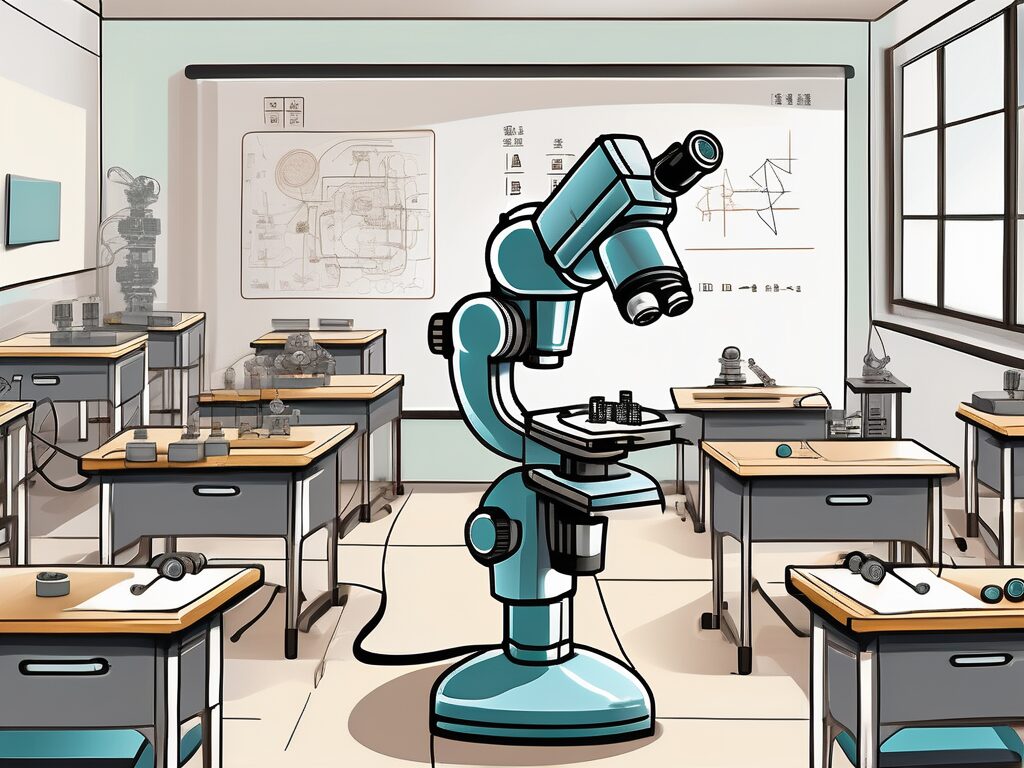In the ever-evolving landscape of education, STEM (Science, Technology, Engineering, and Mathematics) has become a focal point for many nations, including China. The country’s commitment to enhancing its educational system has led to the integration of innovative teaching strategies, one of which is the IQTS (Inquiry-based Quality Teaching Strategy). This approach encourages students to question, explore, and understand the world around them, fostering a deep-rooted love for learning. In this post, we’ll delve into five methods of implementing STEM education in China using an IQTS.
1. Inquiry-Based Learning
What is Inquiry-Based Learning?
Inquiry-based learning is a pedagogical approach that places students’ questions, ideas and observations at the centre of the learning experience. Educators play an active role in guiding and facilitating this process, fostering a learning environment that encourages curiosity and intellectual engagement.
Application in STEM
In the context of STEM, inquiry-based learning can be a powerful tool. For instance, instead of directly teaching students about the principles of physics, teachers might present a real-world problem or phenomenon and encourage students to investigate and explain it using their understanding of physics. This method not only enhances students’ problem-solving skills but also deepens their understanding of the subject matter.
2. Collaborative Learning
Understanding Collaborative Learning
Collaborative learning is another effective teaching strategy that involves students working together to solve problems or complete tasks. This approach fosters a sense of community within the classroom, promoting mutual respect and cooperation among students.
Collaborative Learning in STEM
When applied to STEM education, collaborative learning can be particularly effective. For example, students could work together to design and build a robot, or to conduct a scientific experiment. This not only enhances their technical skills, but also develops their teamwork and communication abilities, which are crucial in the modern workplace.
3. Project-Based Learning
Exploring Project-Based Learning
Project-based learning is a dynamic approach to teaching in which students explore real-world problems and challenges. With this type of learning, students are encouraged to become active participants in their education, taking ownership of their learning process.
Project-Based Learning in STEM
In STEM education, project-based learning can take many forms. For instance, students might be tasked with designing a sustainable city, or developing a mobile app to solve a particular problem. These projects not only engage students, but also provide them with practical experience and skills that can be applied in the real world.
4. Technology-Integrated Learning
The Role of Technology in Learning
Technology has become an integral part of our lives, and its role in education is no different. Technology-integrated learning involves the use of digital tools and resources to enhance teaching and learning processes, making education more engaging and effective.
Technology in STEM
When it comes to STEM education, technology plays a crucial role. From using computer simulations to explore scientific concepts, to utilising coding software in teaching programming, technology provides a plethora of opportunities for innovative and engaging learning experiences.
5. Real-World Connections
Making Learning Relevant
One of the key aspects of effective teaching is making learning relevant to students. By connecting classroom learning to real-world situations, educators can help students see the value and applicability of what they are learning, thereby increasing their motivation and engagement.
Real-World Connections in STEM
In STEM education, real-world connections are particularly important. Whether it’s applying mathematical concepts to budgeting and finance, or using engineering principles to design and build structures, making these connections can help students see the practical value of STEM and inspire them to pursue careers in these fields.
In conclusion, the integration of STEM education with an IQTS in China is a promising approach to preparing students for the future. By fostering a love for learning and equipping students with critical skills, this approach can help China continue to thrive in the global economy.
Advance Your Teaching Career with iQTS at UWE
As China continues to lead in STEM education, the demand for qualified educators with a deep understanding of inquiry-based strategies is on the rise. The IQTS at UWE offers the International Qualified Teacher Status (iQTS) Programme, specifically designed to elevate your professional credentials and prepare you for the global educational landscape. With our programme, you can overcome the barriers of strict qualification requirements, enjoy a 45% increase in promotion rates, a 30% salary boost, and expand your professional network by 300%. Embrace the opportunity to become 65% more adaptable to international curricula and reduce feelings of isolation by joining a thriving community of educators. Don’t let the challenge of balancing work and study hold you back; our flexible online study options are tailored for working teachers like you. Make Your Next Step towards a transformative career in STEM education with the IQTS at UWE.

